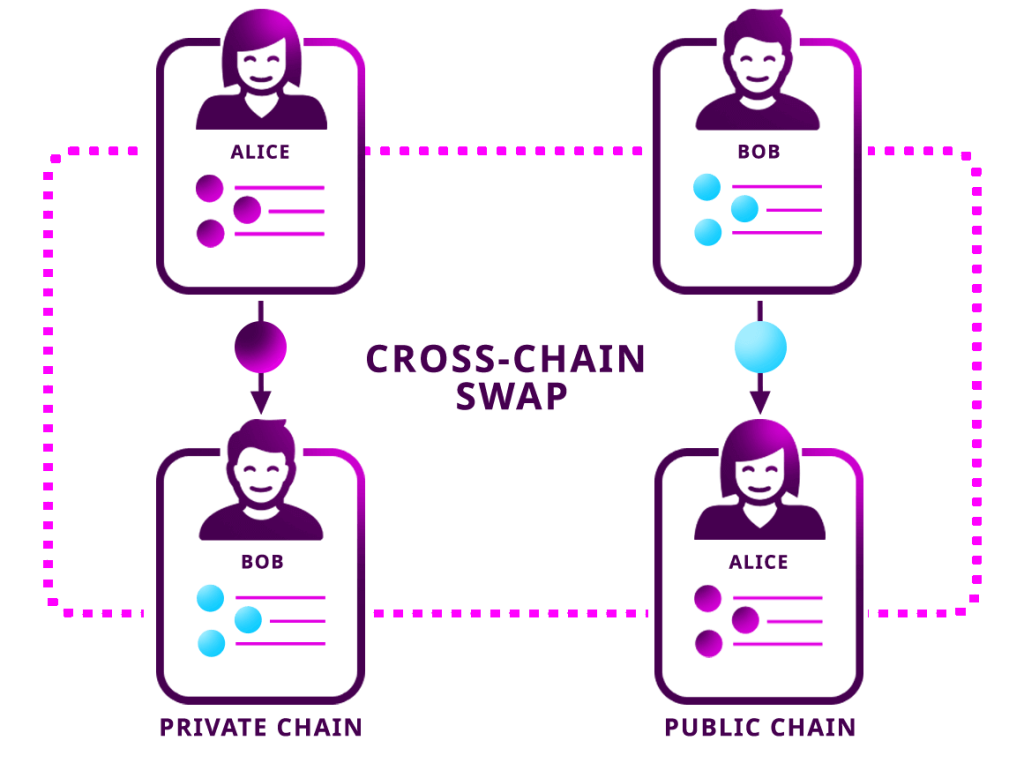Content Attributes
Cross-chain swaps have emerged as a crucial solution in the blockchain and cryptocurrency landscape, addressing the pressing need for seamless interoperability between disparate blockchain networks. In this context, it’s interesting to note how initiatives are gaining attention. This online trading venue offers a unique approach to managing digital assets, complementing the broader ecosystem of blockchain technology.
As we continue, we explore the concept of cross-chain swaps, offering a deep dive into how three prominent players – Bitcoin, Cosmos, and Polkadot – approach this transformative technology. These swaps enable users to exchange assets across different blockchains, and each of these blockchain projects brings its unique innovations to the table.
As we delve into the specifics of cross-chain swaps, we will highlight their significance and how they function, setting the stage for a comprehensive examination of their roles in the digital ecosystem. Additionally, if you want to know more about investments and firms, you may take advantage of the free registration.
What Is Cross-Chain Swaps?
Cross-chain swaps, also known as atomic swaps, are peer-to-peer transactions that enable users to exchange cryptocurrencies or assets from different blockchains directly without the need for a centralized intermediary. These swaps occur atomically, meaning they either fully succeed or fail, reducing the risk of fraud or loss.
How Cross-Chain Swaps Work?
- Atomic Swaps: Atomic swaps involve two parties, each holding different cryptocurrencies, agreeing to trade their assets. Through the use of smart contracts, the swap is executed simultaneously, ensuring that neither party can back out of the trade once it begins.
- Interoperability Protocols: Interoperability protocols, such as IBC in Cosmos and XCMP in Polkadot, facilitate cross-chain communication and asset transfers. These protocols establish a standardized way for blockchains to exchange data and value.
- Smart Contracts and Decentralized Exchanges (DEXs): Many cross-chain swaps rely on smart contracts and decentralized exchanges (DEXs) to facilitate the exchange of assets. Smart contracts automate the swap process, while DEXs provide liquidity for the trades.
Bitcoin’s Role in Cross-Chain
Bitcoin, as the first cryptocurrency, laid the foundation for cross-chain swaps. While Bitcoin itself is limited in terms of smart contract capabilities, projects like the Lightning Network have enabled off-chain atomic swaps. These off-chain swaps allow Bitcoin to be exchanged for other cryptocurrencies, expanding its use beyond its native blockchain.
Limitations and Challenges
Bitcoin’s primary limitation in cross-chain swaps is its lack of programmability. Its scripting language is intentionally simple to maintain security and decentralization, but this restricts more complex smart contract functionality. This limitation has led to the development of second-layer solutions like the Lightning Network.
Cosmos: The Interoperability Hub

The Cosmos Ecosystem
Cosmos is designed with interoperability in mind. It consists of a network of blockchains, known as “zones,” that can communicate with each other. The Cosmos Hub acts as a central point for connecting these zones, facilitating cross-chain swaps and interoperability.
Inter-Blockchain Communication (IBC) Protocol
The IBC protocol in Cosmos allows different zones to send and receive tokens and data from each other. This protocol is the backbone of cross-chain communication within the Cosmos ecosystem, making it easier for users to swap assets across multiple blockchains.
Advantages and Use Cases of Cosmos for Cross-Chain Swaps
Cosmos offers several advantages for this:
Enhanced security through the use of Tendermint consensus.
- Scalability as more zones can be added as needed.
- Flexibility in creating customized blockchains for specific use cases.
Polkadot: Bridging the Future

Polkadot’s Multi-Chain Architecture
Polkadot’s unique approach involves a network of interconnected blockchains known as parachains. These parachains can communicate with each other through the relay chain, enabling cross-chain asset transfers.
Cross-Chain Messaging Protocol (XCMP)
XCMP is the protocol that allows parachains in the Polkadot network to communicate and share information. This protocol is crucial for cross-chain swaps within the Polkadot ecosystem, enabling seamless asset transfers between parachains.
Potential Impact on Cross-Chain Swaps
Polkadot’s multi-chain architecture and XCMP protocol have the potential to revolutionize cross-chain by offering scalability, flexibility, and enhanced security. As more projects build on Polkadot, the network’s role in cross-chain swaps is likely to grow significantly.
Use Cases and Applications

Cross-Chain Swaps in Decentralized Finance (DeFi)
It plays a crucial role in DeFi by enabling users to access liquidity and assets across different blockchains. This is especially important as DeFi continues to expand its ecosystem beyond Ethereum.
Cross-Chain NFT Trading
NFTs (Non-Fungible Tokens) have gained significant attention in recent years. Cross-chain swaps can facilitate the exchange of NFTs between different blockchains, opening up new possibilities for NFT collectors and creators.
Cross-Chain Asset Transfers
For businesses and individuals, It offer a convenient way to diversify their cryptocurrency holdings or move assets between different blockchain ecosystems without relying on centralized exchanges.
Challenges and Future Prospects
Scalability and Security Concerns
As cross-chain swaps become more popular, scalability and security will be critical concerns. Ensuring that the technology can handle a high volume of swaps while maintaining robust security measures is paramount.
Regulatory Challenges
It may face regulatory challenges as they involve the transfer of assets across different jurisdictions. Governments and regulatory bodies may need to adapt their policies to accommodate this technology.
The Evolution of Cross-Chain Swaps
These are still in their early stages of development. As blockchain technology continues to advance, we can expect to see further innovations and improvements in cross-chain swap protocols and applications.
Conclusion
Cross-chain swaps are a pivotal development in the blockchain and cryptocurrency space. Bitcoin, Cosmos, and Polkadot each contribute uniquely to the evolution of cross swaps, with their strengths and limitations. As the technology matures and adoption increases, it has the potential to reshape the way assets are transferred and traded in the decentralized digital economy. Keep a close eye on these projects, as they are likely to play a central role in the future of blockchain interoperability and decentralized finance.